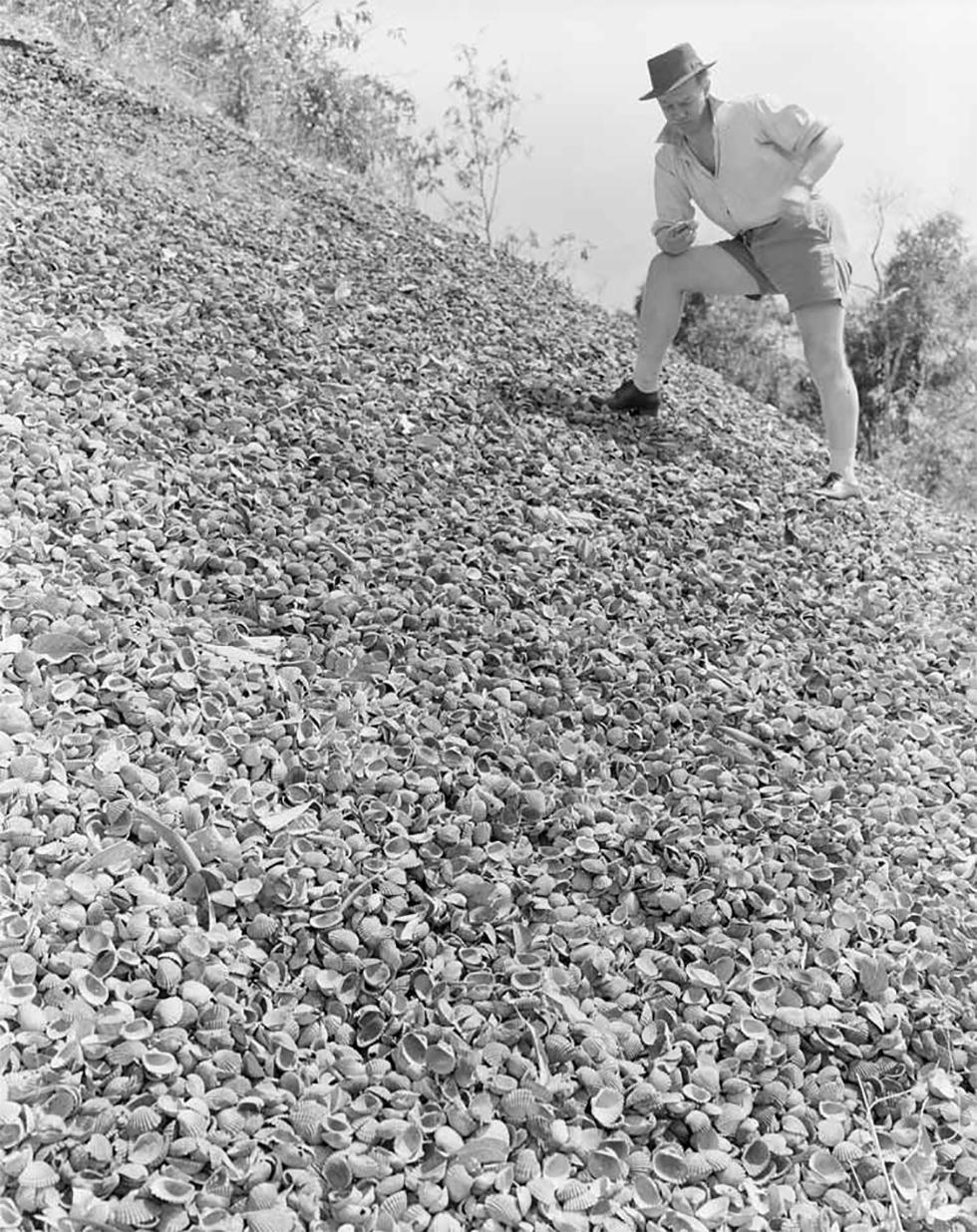


About this record
This is a black-and-white photograph of a shell midden, a mound of mollusc and crustacean shells piled high, taken at Weipa in Queensland in 1958. It shows a man standing on the sloping side of the midden.
Educational value
- Shows a shell mound or midden that provides valuable archaeological evidence about the behaviours of the people who made it – excavations in this or in similar mounds in the area revealed that shells usually make up more than 50 per cent of the middens, along with charcoal layers, polished bone points, and wallaby teeth that have been artificially split to form a cutting surface, as well as stone artefacts; all these items indicate that the mounds are the result of human, not natural activity.
- Depicts one of about 600 shell mounds along the banks of the four rivers that flow into the bay where Weipa (Aboriginal for 'hunting ground') now stands on the northwest coast of Cape York – shell mounds are typically found in clusters near coastal areas or inland near lakes, rivers and swamps and, because of its remoteness, this location has one of the few major clusters of shell middens in Australia to have survived almost intact.
- Shows the collection of crustacean and mollusc shells of what is probably one of the tallest mounds in the cluster – most middens are only 1–2 metres high, but some reach a height of 9 metres and the tallest is no less than 16 metres high; similar mounds can be up to 70 metres long.
- Reveals the extent of Aboriginal food collection activities – radiocarbon dates taken at the bases of the mounds reveal the shells in this and other similar middens began being accumulated between 2700 BP (Before Present) and as recently as 180 years BP; the size of the middens indicates that up to 9 million tonnes of cockle shells may have been collected each year, yielding about 27 tonnes of meat, enough to feed 18 people for a whole year.
- Shows that the crustacean and mollusc shells comprising the mound is predominantly a single species – this is unusual as most middens contain varieties of species or at least different species from the one habitat; however, the composition of this and similar middens in the cluster is more than 90 per cent of the shellfish species 'Anadara granosa', or cockle shells; the largest of these mounds is thought to have a volume of 9400 cubic metres and the 600 mounds together contain 200,000 tonnes of shell or more than 9000 million cockles.
- Depicts a large steep-sided deposit of shells that is the subject of various archaeological theories – some archaeologists have suggested that mounds of this type were deliberately constructed by small family groups living close to the natural resources of cockle beds on a yearly basis during the late wet season, and that these and similar large mounds provided people with dry campsites above waterlogged and flooded ground; other archaeologists think they are simply garbage dumps, evidence of large numbers of people intensively exploiting the resource on an irregular basis due to the seasonal availability of the cockle shells.
- Indicates the ignorance of the climber about the damage he may be doing to the site – this is one of 1252 shell middens in Queensland alone that have been listed on the inventory of Aboriginal and Torres Strait Islander heritage places compiled in June 1998, which provides valuable recognition of irreplaceable heritage sites; this and similar shell middens are also included on the Australia ICOMOS (International Council on Monuments and Sites) charter for the Conservation of Places of Cultural Significance (the Burra Charter).
Acknowledgments
Learning resource text © Education Services Australia Limited and the National Archives of Australia 2010.
Need help with your research?
Learn how to interpret primary sources, use our collection and more.
